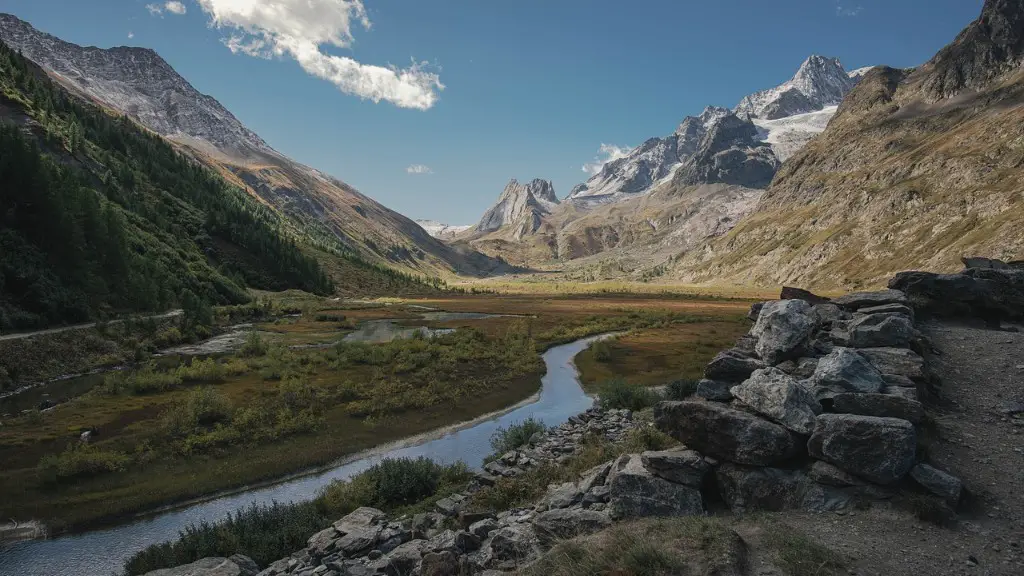The Mississippi River is one of the world’s most well-known waterway, an iconic symbol of America, winding for over 2,300 miles across 11 states from its northwestern source point in Lake Itasca, Minnesota to the mighty Gulf of Mexico.
Given its unique direction of flow, many wonder if the Mississippi River flows north. The answer may be surprising.
The truth is that the Mississippi River does flow somewhat north, in two different sections of the river. The first is near its headwaters in Minnesota, where the river flows slightly north through a small section of northern Minnesota before turning southward. The other instance is in south Louisiana near New Orleans, where the river turns around and begins to flow slightly northwards.
According to Brian Murray, a professor at Minnesota’s St. Cloud State University, “The curve and jog the Mississippi takes in its northern Minnesota section is one of the river’s defining features. It reflects the geological history of the region and provides interesting hydrological insight that affects us today and provides us with lessons for the future. The Mississippi River jogs in Minnesota due to glacial processes that left behind large amounts of sediment in the northwestern and northeastern parts of the state along with a ridge in between.”
This sediment deposited during the last glacial period has heavily impacted the course of the river. It has created more shallow areas and narrower waterways, both of which would naturally redirect the course of the river and force it to flow north.
In south Louisiana, the unexpected change in direction is the result of river engineering. The Old River Control Structure, which is designed to keep the volume of the Mississippi River flowing down the Atchafalaya River, is responsible for redirecting the flow of the river in the opposite direction.
Without this structure, the Mississippi River would take approximately 30 percent of its water down the Atchafalaya, resulting in the shift of the course of the water from the more wide and deep Mississippi to the narrow and shallow Atchafalaya, which is a much more preferable route for the Mississippi River.
Impact on Local Environment
The shifting of the Mississippi River has had a dramatic impact on the local environment. The change in direction and flow of water has caused the formation of several oxbow lakes and spurred the growth of wetlands in the vicinity. The wetlands are a particularly important part of the local ecosystem, offering valuable habitat for a variety of flora and fauna, including aquatic plants, fish, turtles, and amphibians.
The wetlands also provide important ecological services such as water filtration and providing natural flood control. The wetlands surrounding the Mississippi River have also been credited with significantly reducing the risk of flooding in the area.
The wetlands have also been credited with providing economic benefits to the region. In particular, the wetlands of the Mississippi River are an important breeding ground for fish, birds, and other wildlife, making them an incredibly valuable asset to recreational and commercial fishermen.
In addition, the wetlands of the Mississippi River provide valuable habitat for large mammals such as the American Alligator. These species are an important draw for tourists and can provide an important source of revenue to local businesses.
Impact on Surrounding Areas
The shifting of the Mississippi River has had a profound impact on the surrounding areas. The river has been responsible for the formation of several oxbow lakes, which are deep, narrow lakes that are the result of its meandering nature. These lakes often host a variety of fish, reptiles, and amphibians and provide essential habitat for numerous species.
The Mississippi River has also caused widespread flooding in the area. It is an important source of water for much of the region, but it can also cause serious damage when floods occur. The flooding of the Mississippi River has caused immense disruption and destruction to homes, businesses, and infrastructure in the surrounding area. These floodwaters have also been responsible for causing soil erosion and extensive damage to farmland.
The changing course of the river has also had an impact on local transportation, as several major bridges have been built across the Mississippi River. These bridges have allowed for easier access to the region and have had a positive impact on the economic development of the area.
Protection of River
Given the importance of the Mississippi River, there have been several initiatives to protect it and its surrounding areas. The US Environmental Protection Agency has developed numerous programs to help protect the river and its wetlands, such as reducing runoff and preventing erosion.
The US Army Corps of Engineers has built the Old River Control Structure in south Louisiana to help manage the Mississippi River’s flow. This structure helps to ensure the stability of the river and reduces the threat of flooding.
In addition, several conservation groups have been established to help protect and restore the wetlands of the Mississippi River. These groups work to reduce pollution, prevent erosion, and promote sustainable development in the region.
Conclusion
The Mississippi River does, in fact, flow north at two different points in its journey from the headwaters of Lake Itasca to the Gulf of Mexico. Both of these changes in direction have been caused by the unique geological and hydrological features of the region. The shifting course of the river has had an enormous impact on local wildlife and the surrounding environment, making it necessary to take action to protect it.




